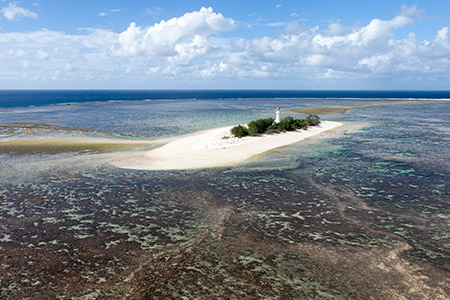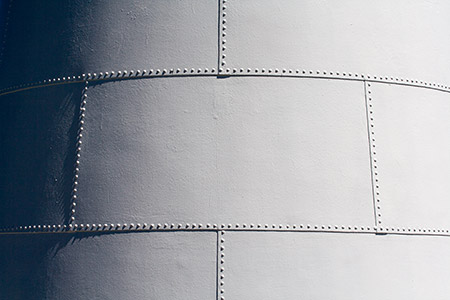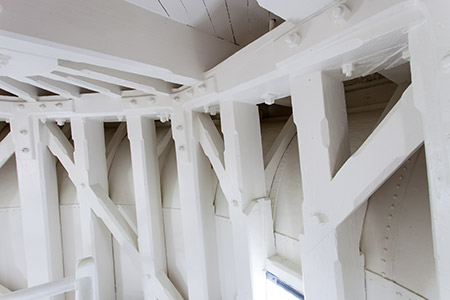Marking time in July 2015
Lighthouses in the spotlight
The ABC Radio National program Off Track is on my regular listening list. Each week Ann Jones interviews all sorts of ratbags and obsessives. She catches the intimate voice of her subjects, along with the sonic atmosphere of the places they inhabit, and assembles radio pieces that teleport the listener there. Magic.
To mark the centenary of the Commonwealth Lighthouse Service Ann Jones has made a program with a focus on the Queensland timber-framed, iron-clad towers that I am so fond of.
I got to be one of Ann’s subjects this time. I met her beside the Brisbane River at the Queensland Maritime Museum and we talked lighthouses. She wove our conversation in with the sounds of Double Island Point and the voices of Lyndon O’Grady, Jack Duvoisin, Col Gladstone, and Glenn Wiggin, and made a wonderful show, if I may say so.



Marks of use
It’s an ordinary woodworker’s smoothing plane, a tool used by joiners, cabinetmakers, shipwrights and carpenters. Its job is to remove thin shavings of wood to produce a finished smooth surface. It might look crude, but is actually a highly evolved and capable tool, composed of a wooden body, a wooden wedge, and a steel blade.

I know the history of this particular example because it belonged to my grandfather, John Victor (Vic) Marquis-Kyle (1897-1981). I remember, as a five year old, watching curly pine shavings streaming out of the plane, and the sweat dropping off Pa’s chin. I associate this tool with him—this emotional connection has stayed with the plane since it came into my hands in the 1970s.
As a lad, Vic was apprenticed to a cabinetmaker in Brisbane and this plane was probably part of his initial kit of tools, acquired (I’m guessing here) around 1910. He marked the top of the plane with his initials, VK, with chisel cuts. Probably later, he added more prominent marks with letter punches—similar marks appear on many of his other tools.

He finished his apprenticeship during the Great War, and promptly joined the navy. He never returned to the cabinetmaking trade but he did continue to work with tools and to develop fine skills in a good number of other trades and crafts.
Vic’s plane shows the marks of long use. It is made of beech, a hardwood favoured by European toolmakers. The name of the maker—John Moseley & Son of London—is barely readable on the toe of the plane beneath the hammer-bruises.
The cutting blade of a plane like this—called the plane iron—is held in place by a wooden wedge. To tighten and loosen the iron, and to adjust the projection of the iron (and the thickness of the shaving), the worker uses a small hammer to tap different parts of the plane. Vic’s plane shows the marks of taps on the front and back of the body, on the iron, and on the wedge. I have contributed to those marks, to a small degree.

Some collectors put a high value on old objects that are in ‘mint’ or ‘as new’ condition. But some artefacts are culturally valuable for the opposite reason: they are worn and marked with evidence of having been used, or of being changed to suit new patterns of use. Connoisseurs use the term patina for the aesthetic quality of the marks of use. You don’t need to be an expert to enjoy the sight of these marks, but a little explanation can help.
Some old buildings have gone through many changes of use, and the physical evidence of those alterations is part of their cultural significance and can be used to tell engaging stories.
The Mercy Heritage Centre, within the campus of All Hallows School in Brisbane, occupies Adderton, the house built for Dr Fullerton in the 1850s—one of the best houses in the town at that time. The house was taken over by the Sisters of Mercy in the 1860s and became part of their convent and school. Successive additions and alterations have been made there, to bring the building to its present state. One of the items on display in the heritage centre is an area of internal wall whose paint has been meticulously stripped back to show remnants of the interior decoration from various times. This is a wonderful glimpse of the taste of the different periods.
